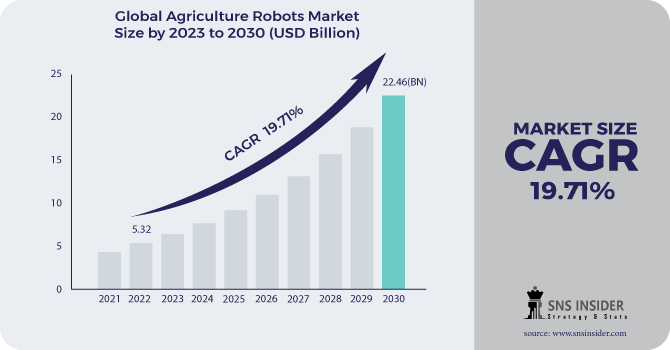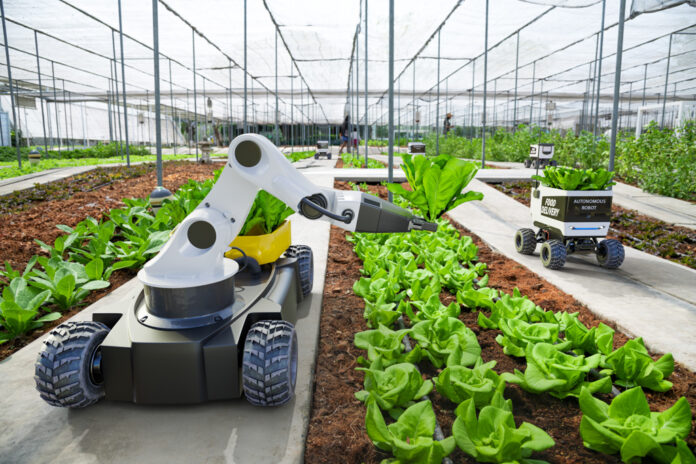Market Scope & Overview:
The Agriculture Robots Market report is a comprehensive and high-quality research document that encompasses critical components expected to significantly impact the market in the forecast period. Utilizing market shares and growth rates, the study determines the value of major market sectors. Additionally, the research delves into the effects of the COVID-19 pandemic on international trade. It evaluates the current position of the industry and forecasts future market changes.
Researchers employ both quantitative and qualitative research methods to calculate the market growth rate. The Agriculture Robots market research furnishes comprehensive information on the industry’s market size, share, production capabilities, demand, and projected growth over the coming years. Furthermore, it includes a detailed analysis of the primary influencing and hindering variables that will shape the market’s growth trajectory throughout the forecast period.
Obtain a Sample Copy of this Report @ https://www.snsinsider.com/sample-request/2548

Market Segmentation Analysis:
The Agriculture Robots analysis investigates market segmentation by product type, application, end-user, and geography. In addition, the research includes an in-depth examination of the core industry, including categorization, description, and supply and demand chain organization. The study looks into cost-cutting and manufacturing practices, as well as the industry’s growth goals and strategies.
Key Market Segmentation:
By Application:
-Field Farming
-Harvest Management
-Soil Management
-Dairy Management
By Farming Environment:
-Indoor
-Outdoor
By Offering:
-Hardware
-Software
-Service
By Farm Produce:
-Field Crops
-Fruits & Vegetables
-Dairy & Livestock
By Type:
-Milking Robots
-Unmanned Aerial Vehicles (UAVs) Drones
-Driverless Tractors
-Automated Harvesting System
COVID-19 Impact Analysis:
Large organizations have devised innovative business models that are currently on the market to reduce the negative consequences of the COVID-19 epidemic on their operations. By examining and analyzing these growing models, the study investigates the potential investment opportunities for both new entrants and incumbent enterprises. The COVID-19 pandemic had a significant impact on the global Agriculture Robots industry in a multitude of ways. While some markets and organizations have seen increased demand and opportunities for growth, others have seen significant job losses and layoffs.
Key Players:
The Major Players are Harvest Automation, Autonomous Tractor Corporation, AGCO, Lely, Autonomous Solutions Inc., John Deere, DeLaval, GEA Group, Clearpath Robotics, Deepfield Robotics & Other Players
Gain Access to the Full Report @ https://www.snsinsider.com/reports/agriculture-robots-market-2548
Regional Outlook:
The Agriculture Robots market research study considers major geographical regions such as Latin America, North America, Europe, Asia Pacific, as well as the Middle East and Africa. This data can help market participants locate profitable locations to expand their activities.
Competitive Analysis:
The research report provides data on the size, revenue, status, and forecast of the global industry. There is also information available about market participants, such as production capacity, import and export, growth rate, pricing analysis, cost structure, distribution options, manufacturing processes, and profit margin. The report takes into account recent mergers, acquisitions, partnerships, agreements, product launches, and R&D activities that have altered the competitive landscape of the Agriculture Robots market.
Key Reasons to Purchase Agriculture Robots Market Report:
-The primary focus of the market report is on historical and current market trends that influence its development in many sectors.
-According to the research report, the market is fast changing, and the implications for the present and future are being investigated.
Buy Now to Secure Your Copy @ https://www.snsinsider.com/checkout/2548
Conclusion:
The Agriculture Robots market research report forecasts the industry’s future trajectory based on a range of facts obtained from an in-depth review of historical market data that market participants will find useful.
